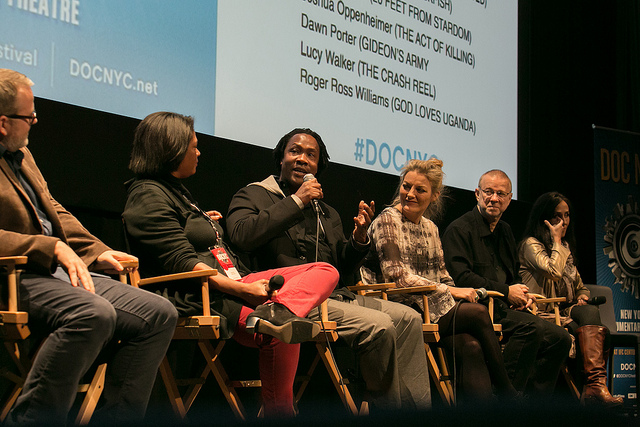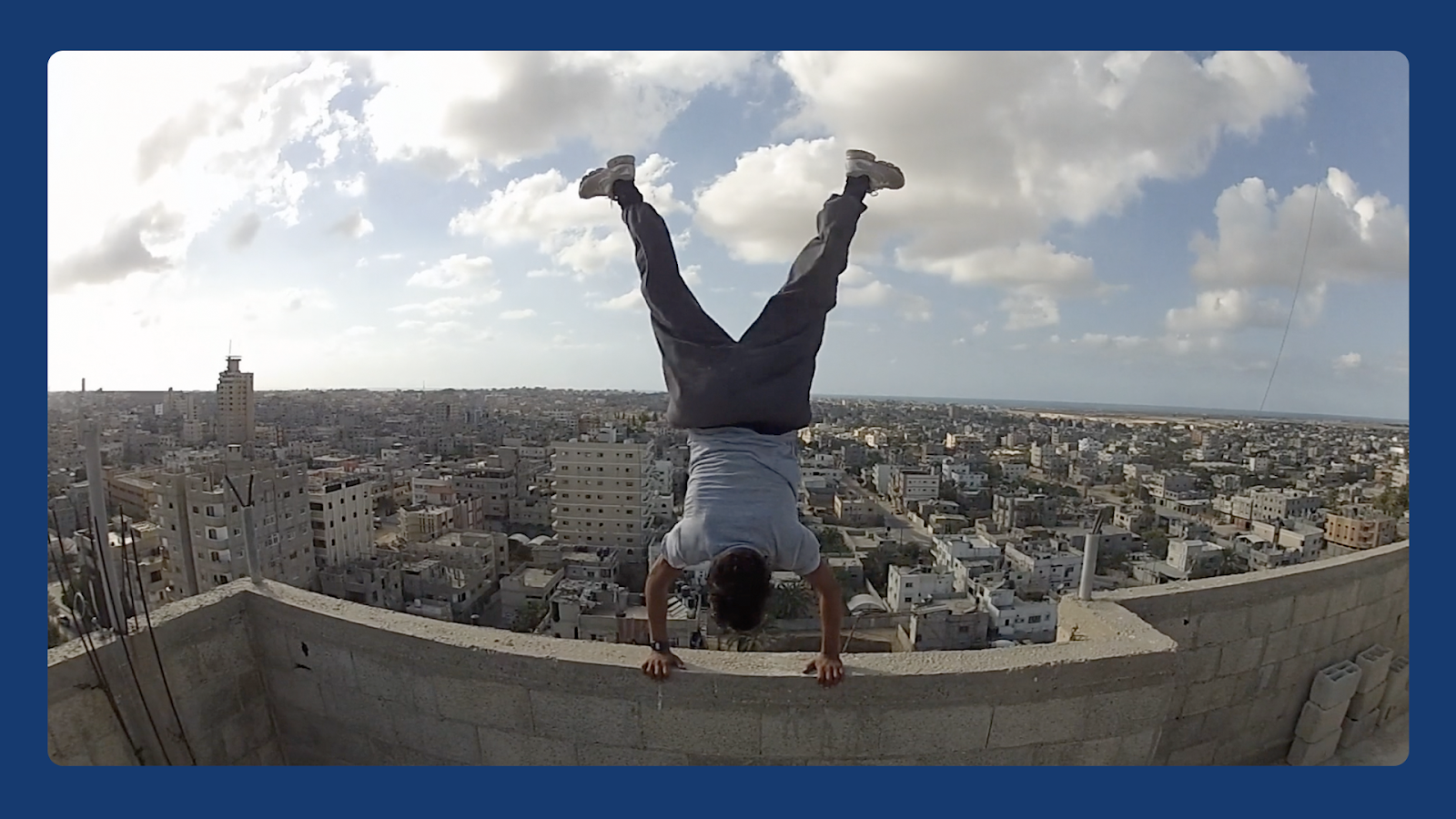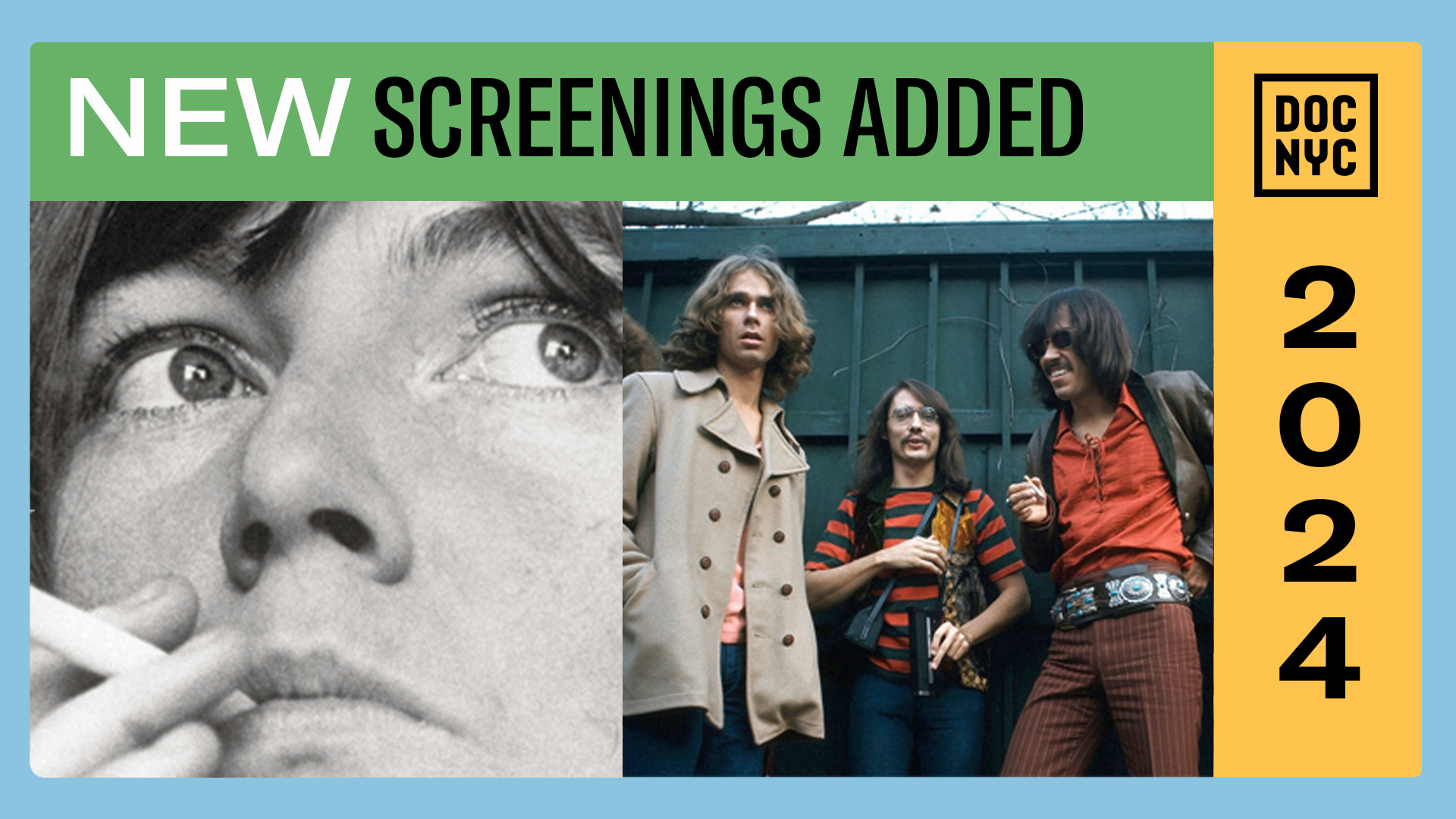Meeting the DOC NYC Short List Directors

This post was written by DOC NYC blogger Karen Backstein

On Wednesday the DOC NYC Festival kicked off with panel that showcased some of this year’s top directors—the ones whose works made the shortlist, which festival Artistic Director Thom Powers called “films that came out earlier this year that merit extra attention.” This year, the panel focused on the artistry involved in making a documentary, an area that’s frequently ignored when it comes to nonfiction films. All too often audiences believe that you can simply point a camera at reality and end up with a great movie, but the truth is that it demands as much cinematic skill to create a well-structured, engaging, and visually appealing documentary as it does to make a good work of fiction.
The group consisted of Morgan Neville (20 FEET FROM STARDOM); Dawn Porter (GIDEON’S ARMY); Roger Ross Williams (GOD LOVES UGANDA); Lucy Walker (THE CRASH REEL); Alan Berliner (FIRST COUSIN ONCE REMOVED); Gabriela Cowperthwaite (BLACKFISH), and Joshua Oppenheimer (THE ACT OF KILLING).
Josh Oppenheimer’s THE ACT OF KILLING, a critically praised look at mass political killings in Indonesia, was 10 years in the making. In this unique film, the still free murderers reenact their crimes in the style of their favorite Hollywood genres. Powers asked Oppenheimer how he negotiated the split between the observational style and the recreations. Oppenheimer said that it was a challenge because he had to work in two modes: one were his subjects were allowed a space where they could create the scene they wished in their preferred style and with their chosen crew, and another more intimate one where he shut down the set to speak with them. Another difficulty he faced was capturing the cinematic styles of the different genres. And throughout it all he had to find a coherent language and a moral point of view to unite all of those different modes of performance and filmmaking.
Powers then praised Gabriela Cowperthwaite’s use of archival footage in BLACKFISH, a technique Cowperthwaite said was unusual for her. The approach forced her to find a different type of structure than she might have when using all original material. Cowperthwaite—whose film followed animal activists as they tried to expose cruelty to dolphins—said she faced physical challenges while directing because she was out in very harsh terrain and in often-freezing temperatures.
Alan Berliner’s documentary FIRST COUSIN ONCE REMOVED created a portrait of his Alzheimer-stricken cousin. Berliner had to work around his cousin’s physical constraints. But what he discovered during the process was that he “began to love” his cousin’s face, and that he could see in it a resemblance to all the members of his family he cared about. FIRST COUSIN ONCE REMOVED, then, almost became a study in the close-up shot. Berliner pointed out that he could not use high definition video to get the results he wanted because that visual clarity wouldn’t have had the human impact he was searching for.
Lucy Walker’s CRASH REEL, a look at elite snowboarders with its action footage, was somewhat different from the other films in the Short List category. But Powers likened the to the “best kind of observational filmmaking” and cinema verite. Walker took an opportunity to praise her crew, particularly cinematographer Nick Higgins, whom she said she trusted implicitly and who was invaluable during a rapid shoot. “I love what he does,” Walker said, very clearly seeing him as an important collaborator who contributed immeasurably to the quality of the documentary.
Roger Ross Williams’ film GOD LOVES UGANDA explored the effect of Christian missionaries on the culture of Uganda, specifically in relation to homosexuality. Williams stated that it was important to capture the overwhelming evangelical fervor that exists in Uganda in all its detail, or as he described it, “all of that intense, intense hysteria.” Williams said that he wanted to record the street preachers on every corner, the people speaking in tongues, and the Christian imagery found everywhere.
Dawn Porter was the lone first-time director among the group. The subjects of her film, GIDEON’S ARMY, are underpaid public defenders who work overtime in a very stressed criminal justice system. Porter said she was always aware that she could not be disruptive while shooting in court or with client, or else lose access to her subjects. She said that she was grateful that her cinematographer had a good ability to stay in the moment, and also mentioned that some shots depended on good old-fashioned luck—including one that she was able to get because one of her cameramen was a skydiver.
Morgan Neville’s 20 FEET FROM STARDOM, about the backup singers who remained outside the spotlight, has already made a splash. Neville said he strived to create a very warm feel, which meant foregoing high definition footage. For the film’s recording sessions, he researched 1960s photos in order to create an old-fashioned, stylized look. Neville also said he had to work hard to gain the women’s trust even prior to shooting because many of them were wary and had been burned before.
With films that ranged from portraying murderers to defending the poor, from capturing singers and snowboarders to rescuing dolphins, the conversation at the event covered almost every possible type of documentary challenge. It was both illuminating in showing how a film got made, and also in showing approaches that aspiring directors could use in making their own documentaries. In short, this fascinating and instructive discussion was almost like a mini-class in the form.


